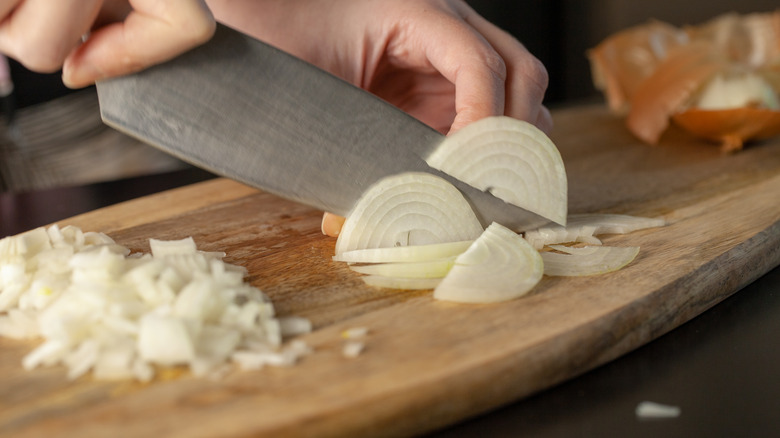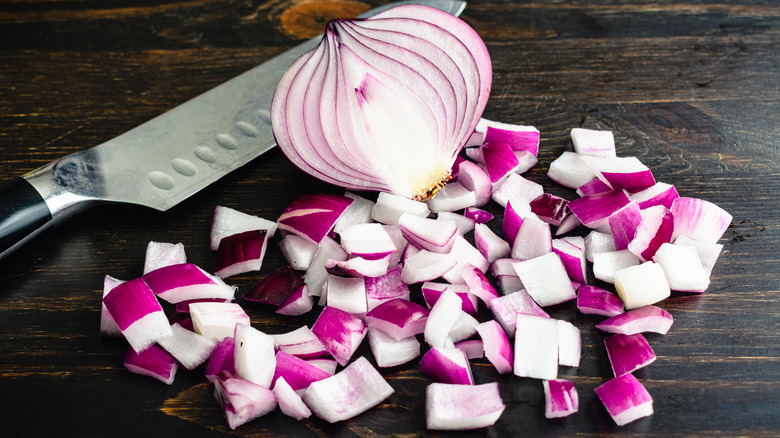Use Water When Dicing Onions To Prevent Your Eyes From Tearing Up
Our reliance on onions as a dietary and culinary staple dates back to prehistoric times. Yet despite our cultivation and use of this crop for the past 5,000 years, we're still rendered powerless by its ability to reduce us to tears every time we chop one up. Credit that stinging sensation we feel in our eyes while slicing onions to propanethial S-oxide, a sulfur chemical that's produced whenever an onion's amino acid sulfoxides mix with its enzymes once the barriers between them are broken down.
After this chemical is released into the air and comes into contact with the eyes, it reacts with the film of water that coats our eyeballs to create sulfuric acid. The resulting burning sensation then triggers our tear ducts to produce tears to flush the irritant out. It's a highly unpleasant experience that's still worth putting up with to have the flavor and texture of onions elevating our entrées, soups, salads, sauces, and more.
Through experimentation and trial and error, chefs and home cooks alike have discovered different possible remedies that would neutralize or at least mitigate the potency of propanethial S-oxide. One popular recommendation? Slicing onions either under running water or while they're submerged in water to keep their sulfuric fumes from dispersing. Try this hack if your sink is big and deep enough to fit your chopping board and still leave you with room to maneuver your knife properly. You can also fill a huge tray with water and do your slicing in it.
Other ways to minimize onion tears
This kitchen trick is recommended with caution, though. You must keep a firm grip on both the onion and your knife since water can make the produce more slick, plus the refraction of light distorts your view of what you're doing. It's best to use when you only need to chop onions. For more precise slicing, there are other more convenient hacks you can rely on. Wearing goggles is a foolproof way of protecting your eyes from onion vapors.
Nose plugs also provide extra protection by preventing fumes from reaching the eyes through your nasal passages. Chilling onions in a bowl of iced water for 30 minutes before slicing is also a popular remedy. While it won't prevent the production of propanethial S-oxide, it slows it down enough to buy you some time to slice the onions the way you need to. Also, avoid using a dull knife to cut onions because its lack of precision causes greater damage to the onion's structure, which facilitates the chemical reaction that leaves us crying.
And speaking of structure, home cook Michael Tchao shared his technique of cutting an onion along (rather than against) its grain to preserve more of its fibers in an Instagram post. This means slicing it lengthwise, or from tip to root, instead of crosswise. While this is more about retaining the onion's crunch and texture for certain dishes and cooking methods, keeping its structure as intact as possible also decreases the possibility of waterworks.

